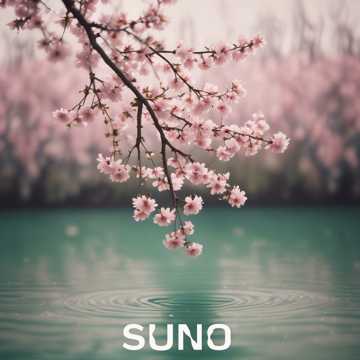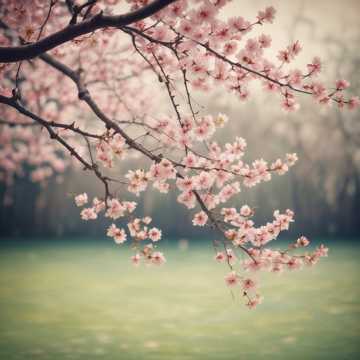
Free Koto Music Generator Powered by AI
Turn text into high-quality Koto music effortlessly – no login required!
music.toolTips

xxirelxx — jak koi pod niebem Sakury
Liryczna opowieść o delikatności, sile i nadziei, zanurzona w dźwiękach Japonii. 'jak koi pod niebem Sakury' łączy melancholię z lo-fi spokojem, tworząc poetycki pejzaż duszy i odrodzenia.
02:53
3 hours ago

Spirits in the Shadows
A haunting fusion of traditional Japanese folk and eerie imagery, 'Spirits in the Shadows' brings mythical spirits to life through evocative lyrics and ethereal melodies, creating a chilling yet captivating atmosphere.
03:42
7 hours ago

未来への灯火
『未来への灯火』は、伝統と現代を繋ぐ希望の歌。祭りの情景と共に、受け継がれる心の炎を描いた感動的な和風オーケストラ作品。
03:57
20 hours ago

Cherry Blossom Flow
A fusion of Japanese tradition and modern beats, 'Cherry Blossom Flow' reflects on life's impermanence through evocative imagery and dynamic soundscapes, blending shamisen, taiko drums, and rap with 808s and koto.
02:19
20 hours ago

つなぐ未来
『つなぐ未来』は、自然と共に生きる人々の絆と希望を描いた和風バラード。伝統楽器が紡ぐ優しい旋律が、過去と未来をつなぐ温かなメッセージを届ける。
03:12
2 days ago

Whispers of the Sakura
An instrumental composition blending koto and Japanese flute with ambient textures of water and wind, creating a tranquil, meditative atmosphere. Perfect for relaxation or deep introspection.
01:20
2 days ago

Sakura
A powerful, emotionally rich song blending soft percussion and Japanese-inspired melodies, capturing themes of love, strength, and resilience. 'Sakura' symbolizes beauty amid chaos, with lyrics that evoke both personal struggle and profound transformation.
04:00
2 days ago

Blades of the Rising Sun
An epic fusion of traditional Japanese sounds and cinematic energy, 'Blades of the Rising Sun' narrates a warrior's journey, blending honor, battle, and glory with the sounds of koto, shakuhachi, and taiko drums.
02:24
2 days ago

未来へのツナギ
伝統の音と現代の心を融合させ、過去と未来、人と人を繋ぐ温かな絆を描いた希望の歌。
02:04
2 days ago

Whispers of the Sakura
An instrumental composition that combines koto and shakuhachi, creating a serene, reflective mood, perfect for meditation or relaxation.
03:21
3 days ago

2
平安時代の箏を中心に、ゆるやかで悲哀に満ちた旋律が、人生の無常と静けさを描く哲学的な音楽作品。
02:06
5 days ago

Serpent Blossoms
A mythical and haunting track exploring beauty, danger, and duality. The fusion of ancient zen-inspired instruments with modern beats enhances the song’s emotional depth, creating a chilling yet graceful atmosphere.
02:35
6 days ago
Comprehensive Introduction to the Traditional Japanese Instrument Tag: Koto
The koto is a traditional Japanese stringed musical instrument that belongs to the zither family. Characterized by its long, rectangular body and 13 strings stretched over movable bridges, the koto is plucked using three finger picks. Originating from the Chinese guzheng and introduced to Japan during the Nara period (710–794), the koto evolved uniquely within Japanese court music known as gagaku. Over centuries, it became a prominent solo and ensemble instrument, especially during the Edo period (1603–1868), when it was embraced by both aristocratic and commoner classes. Today, the koto stands as a cultural symbol and a core keyword in traditional Japanese music, with applications in both classical and contemporary genres.
Sub-tags and Classifications in the Koto Music Genre
Classical Koto
Classical koto refers to traditional compositions often rooted in historical Japanese music forms such as gagaku and sankyoku. This styleKoto Music Overview is typically characterized by complex musical structures and adherence to historical performance practices.
Contemporary Koto
Contemporary koto explores modern compositions and fusions with Western instruments. This sub-tag includes avant-garde music, jazz-koto hybrids, and experimental soundscapes, often featuring the koto in non-traditional contexts.
Kumiuta
Kumiuta is a traditional form of koto music that pairs poetry and song lyrics with instrumental koto accompaniment. It often reflects themes from classical Japanese literature and is known for its refined and poetic aesthetics.
Sankyoku Ensemble
This sub-tag involves the koto being played alongside the shamisen and shakuhachi in ensemble settings. Sankyoku music emphasizes harmonious interplay between the instruments and is a key part of traditional chamber music in Japan.
Solo Koto Improvisation
Solo koto improvisation emphasizes individual expression and technique, allowing musicians to explore diverse musical textures. This style often appears in modern and experimental performances.
Famous Artists and Iconic Works in the Koto Music Tag
Miyagi Michio
Miyagi Michio (1894–1956) is widely considered the father of modern koto music. He revolutionized the instrument by introducing new techniques, compositions, and even creating the 17-string bass koto. His famous piece 'Haru no Umi' remains one of the most performed koto works globally.
Haru no Umi
Composed by Miyagi Michio in 1929, 'Haru no Umi' (The Sea in Spring) is a duet for koto and shakuhachi. The piece captures the gentle, flowing imagery of Japan's seascape and exemplifies modern tonal experimentation within traditional forms.
Sawai Kazue
Sawai Kazue is known for her pioneering work in contemporary koto music. A co-founder of the Sawai Koto School, she collaborated with modern composers and incorporated avant-garde styles, expanding the expressive potential of the instrument.
Rokudan no Shirabe
This iconic work by Yatsuhashi Kengyō is one of the foundational pieces in the classical koto repertoire. Structured in six dan (sections), it showcases the refined elegance and melodic sensibility typical of Edo-period koto music.
Yatsuhashi Kengyō
A 17th-century blind musician, Yatsuhashi Kengyō is credited with adapting the koto from court music to more accessible styles. He composed the iconic 'Rokudan no Shirabe,' one of the most studied and performed classical koto pieces.
Midare
Attributed to Yatsuhashi Kengyō, 'Midare' (Disorder) is a visually and sonically complex piece that deviates from strict rhythmic structures. Its innovative design made it a benchmark for creative koto compositions in classical traditions.
Keiko Nosaka
Keiko Nosaka was instrumental in developing the 20-string koto and performing contemporary works. Her technical mastery and innovation opened up new possibilities for both performers and composers in the koto tradition.
Tori no Yo ni
Composed by Minoru Miki and performed by Keiko Nosaka, 'Tori no Yo ni' (Like a Bird) features the 20-string koto. It reflects the instrument's soaring potential and introduces advanced techniques in pitch bending and texture layering.
Modern Application Scenarios of the Koto Music Tag
Koto music is frequently used in Japanese historical dramas, anime, and samurai films to evoke traditional Japanese atmospheres. Its distinct timbre helps create an authentic cultural setting and emotional resonance.
Film and Television Soundtracks
Game developers integrate koto music in titles like 'Ghost of Tsushima' and 'Sekiro: Shadows Die Twice' to immerse players in feudal Japan environments. The koto’s sound enhances gameplay by adding emotional and historical depth.
Video Game Music
Koto music is often employed in advertisements to represent sophistication, heritage, and authenticity, especially for brands promoting Japanese goods, travel, or high-end cultural products.
Advertising and Commercials
Thanks to its serene and flowing sound, koto music is widely used in wellness spaces, meditation apps, and spa environments. Its calming qualities promote relaxation and mindfulness.
Meditation and Relaxation Music
Koto performances are featured in traditional festivals, cultural exchange programs, and international concerts, showcasing the richness of Japanese musical heritage to diverse audiences.
Live Performances and Cultural Events